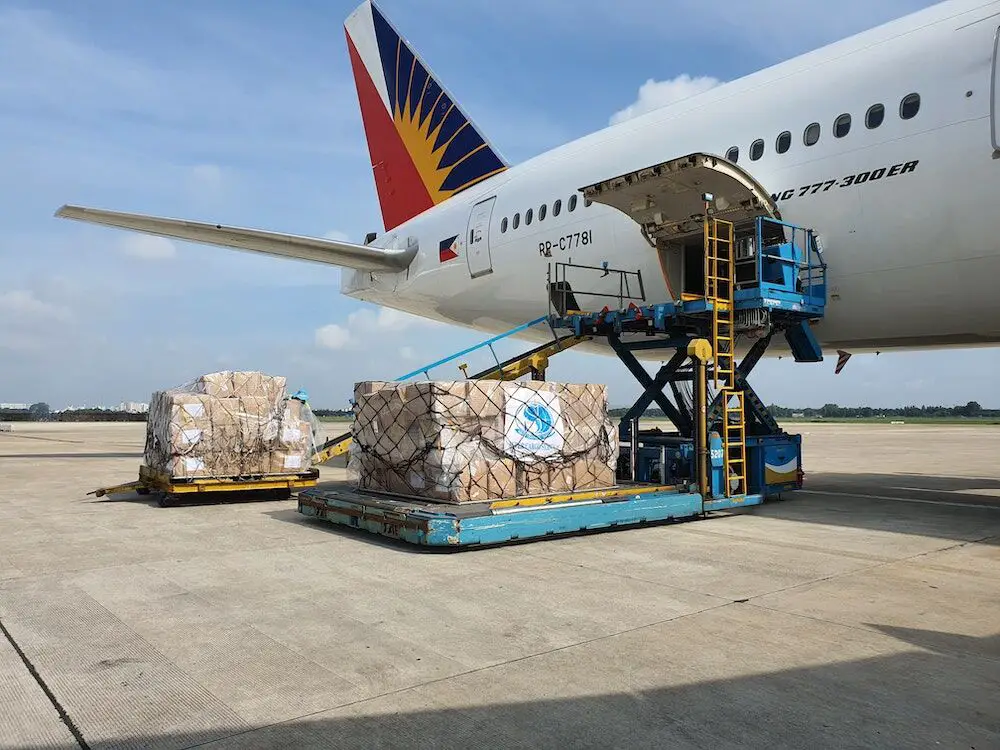Baggage handling at airports can be a mystery to many passengers, but it’s a crucial process that must be taken seriously. In fact, it’s responsible for ensuring that your baggage reaches your destination safely and on time. The entire luggage handling process involves a complex network of systems, machines, and people that work seamlessly together.
Read on to learn more about baggage handling at airports.
Did you miss a connecting flight? File a compensation claim online.

1. All You Need to Know About Baggage Handling at Airports
The baggage handling process is one that is highly automated and efficient.
After passengers have checked in their baggage, the bags are tagged with a barcode that contains the relevant information about the passenger and their destination.
The bags then make their way onto a conveyor belt, which transports them to a security screening area. At this point, the bags go through a series of x-ray machines and scanners that check for any prohibited items or security threats. If the bags are cleared, they continue on to the next stage of the process.
Once the bags have been through security screening, they are sorted based on their destination. This is where the baggage handling system becomes even more complex, with machines taking care of sorting and directing the bags to the correct aircraft.
Typically, this happens through the use of a computerized system that relies on barcoding and scanning technology to automatically sort the bags. The bags are then loaded onto carts, which are sent to the appropriate aircraft.
When the bags arrive at the aircraft, they are loaded onto the plane by baggage handlers. They use specialized loading equipment to ensure that the bags are loaded in the correct order and to make the most efficient use of space within the plane. Once all the bags are loaded, the aircraft is ready for departure.
Upon arrival at the destination airport, the bags are unloaded from the aircraft and transported to the baggage claim area. At this point, they go through another round of automated sorting to ensure that they make it onto the correct conveyor belt. Once they reach the correct conveyor belt, the bags are sent out to the baggage claim area where customers can retrieve them.
2. Baggage on Connecting Flights
What if you have more than one flight?
What happens to baggage on connecting flights?
If you have booked a connecting flight, in most situations, your bag will be sent to your final destination.
Here’s what happens with checked baggage on connecting flights:
- Airline takes care of your baggage. You don’t have to worry about connecting flight baggage transfer, it’s done by your airline.
- You check in baggage only once for the whole journey. You do it at the airport of departure, and that’s all. And it’s being taken to your final destination. You don’t have to recheck it in between flights.
- You are told about that at check in. You can also see that on the baggage tag, that piece of paper they usually attach to your boarding pass — it says the final destination of your baggage.
This applies to most airline-protected connecting flights.
Only on rare occasions, you have to recheck baggage. One such exception is when traveling through the US. When traveling through the US, you also have to have either an ESTA or US transit visa, don’t forget about that.
If you have an airline-protected connecting flight with different airlines (i.e., codeshare flight), the operating airlines will take care of your baggage. In most cases, you won’t need to collect and recheck it between flights.
3. Baggage on Self-Transfer Flights
You may be aware of a different kind of connecting flight called self-transfer flights. Unlike traditional connecting flights, self-transfer flights involve separately-booked flight legs, each with its own unique booking reference number.
What happens with baggage on self-transfer flights?
- You collect and recheck baggage. You do it for every flight. If you have two layovers / stopovers, you will have to do it twice.
- Baggage rules for flights may differ. Especially, if these are different airlines. Make sure to check baggage rules in advance.
- You pay for baggage for every flight. If you have a total of three flights, you will have to pay for checked baggage three times. When traveling with checked baggage on low cost (budget) airlines, sometimes this is the thing that makes people change their mind and travel with full-service airline instead. Always make sure to compare the final price.

4. Lost Baggage and Baggage Tracking
What to do if your baggage is lost?
Lost baggage is an all-too-common experience for air passengers, but it’s important to know how airlines handle lost baggage.
Airlines employ a range of methods to locate lost baggage during connecting flights. Typically, they use advanced tracking systems that rely on barcodes or RFID tags attached to the bags. These systems enable airlines to monitor baggage movement and trace its last known location throughout the journey.
Airlines also work closely with other carriers and airport authorities to search for and recover lost baggage. They may use computerized databases and matching algorithms to match found bags with passenger information and bag descriptions provided during the reporting process.
4.1 What Happens if an Airline Loses Your Luggage?
What to do if your baggage is lost or delayed?
In the event of lost/delayed baggage, stay calm and take immediate action. Head to the baggage service or lost and found office to report the loss of your bag. Fill out a form with details about your bag, and you’ll be given a Property Irregularity Report and a crucial reference number. Keep this document safe to track your bag online.
Be sure to keep all of your receipts for any expenses related to the delay or loss, as airlines may reimburse for things like toiletries or clothing purchases. Although this form of compensation is often referred to as “compensation for delayed luggage,” it simply refers to monetary reimbursement.
If your bag is not found within 21 days, it is considered lost. You are entitled to lost luggage compensation in this case.
In most cases, however, lost baggage is often found and returned to the owner within a few days.
4.2 How to Prevent Lost Luggage?
How to prevent luggage from being lost?
One solution to lost baggage is preparing for the possibility before you ever pack your bags. Consider packing an extra set of clothes, undergarments, and toiletries in your carry-on bag. That way, if your checked bag is lost or delayed, you’ll still have necessary items to tide you over until your bags are found.
It’s also a good idea to label your bag with an ID tag that has your name, address, and phone number, as well as an itinerary info tag that includes your flight and contact information.
4.3 What to Do if an Airline Damages Your Checked Baggage?
What to do if your bag is damaged?
Can you make a damaged baggage claim? Are you entitled to damaged baggage compensation?
Yes. If your bag is damaged, you can receive compensation from the airline.
The most important thing is – you need to report the damage immediately. Head to the baggage service or lost and found office to do it. Be sure to provide detailed information about the damage and any relevant documentation, such as photos or receipts.
Next, make sure to keep all of your baggage claim tickets and other related documentation. This will be important when filing a claim with the airline or your travel insurance provider.
If your bag is damaged, you can receive compensation up to €1300 from the airline. The amount is determined by the value of your damaged bag and covers the cost of purchasing a new one that’s of equivalent value. To obtain compensation, you need to file a claim with the airline. Check your airline’s website for more details on damaged baggage claim.
The airline will pay you through bank transfer once the process is complete.
Do you have more questions about baggage handling at airports and baggage transfer? Ask in the comments.
Featured photo by Ethan Nguyen from Pexels
About the author:
Una is an organized globetrotter and foodie who’s been living a digital nomad lifestyle since 2013. She always starts her day early with a good book before diving into work. Apart from traveling and aviation, her other passions include gym, hiking and cycling. Una is also a strong proponent of AI technology. She firmly believes in its potential to simplify life and has often advocated for its wider adoption in our day-to-day activities. Her favorite airlines are Qatar Airways, Emirates, and KLM.
